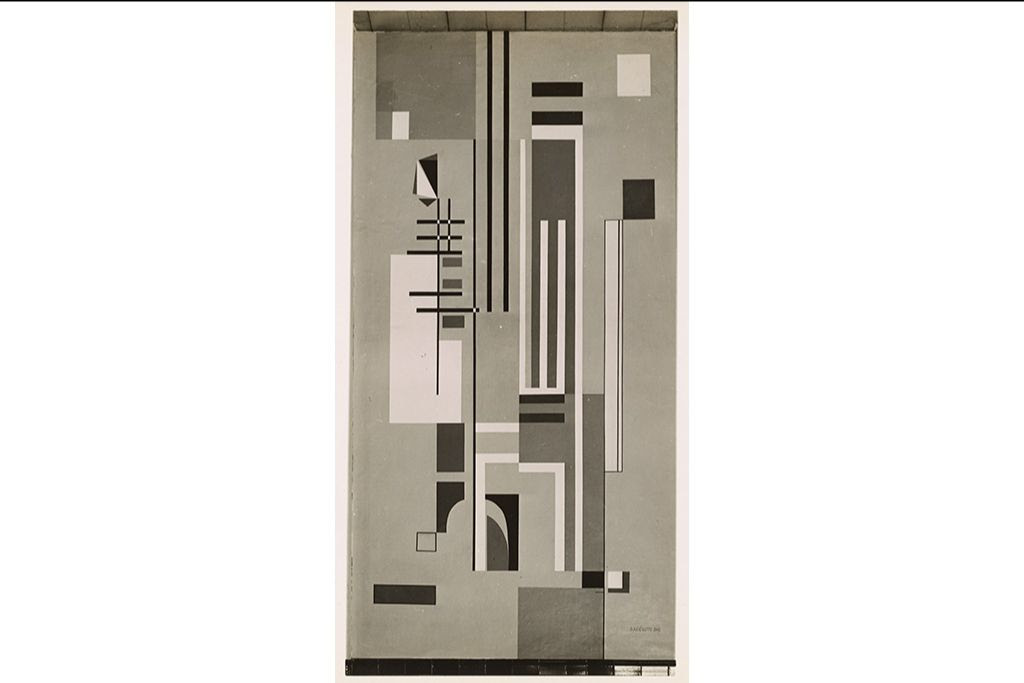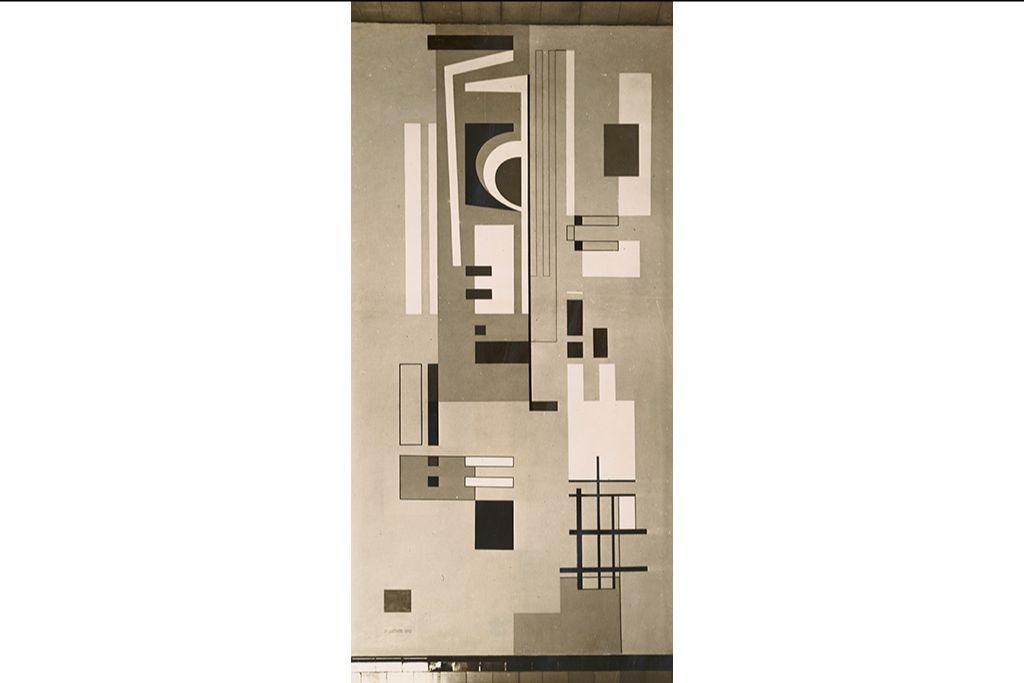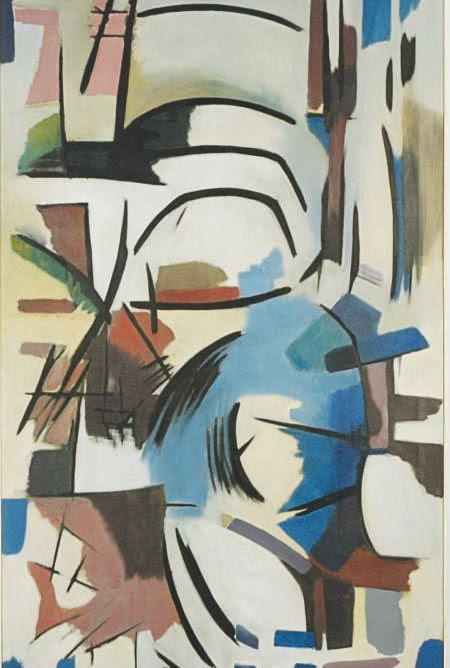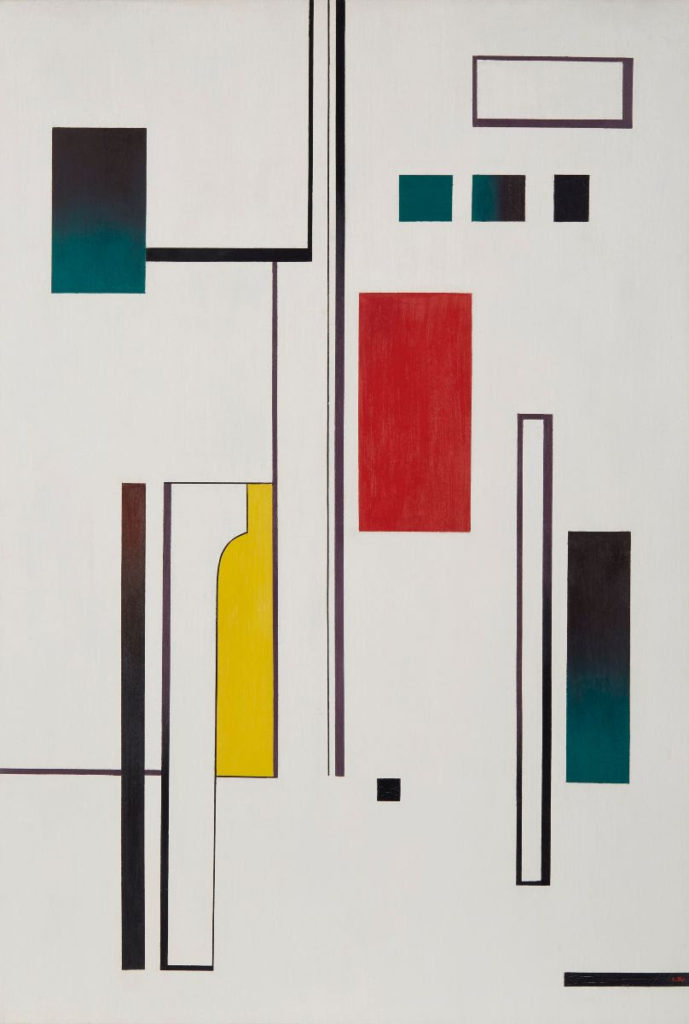Thursday, January 27, 2021 – A GREEK EMIGRANT WHO BECAME A MASTER IN EXPRESSIONIST ART


THURSDAY, JANUARY 28, 2021
The
273rd Edition
From Our Archives
JEAN XCERON
ABSTRACTION ARTIST
WITH ART FROM THE SMITHSONIAN
AMERICAN ART MUSEUM

Jean Xceron, Watercolor #308, 1947, watercolor on paper, Smithsonian American Art Museum, Gift of Patricia and Phillip Frost, 1986.92.107
Jean Xceron, Greek by birth, came to the United States when he was fourteen years old. For the next six years he lived and worked with relatives in Pittsburgh, Indianapolis, and New York City. In 1910, determined to be an artist, he moved to Washington, D.C., and enrolled in classes at the Corcoran School of Art. At the Corcoran, where the curriculum focused on the traditional academic practice of drawing from plaster casts, Xceron perfected his skills as a draftsman. He first encountered modernism when, in 1916, two fellow students arranged an exhibition of avant-garde paintings borrowed from Alfred Stieglitz. The show made a deep impression on Xceron, whose own appreciation for flat color and expressive distortion paralleled the work being done by others.

Jean Xceron, Portrait No. 38, 1932, oil on fiberboard, Smithsonian American Art Museum, Gift of Patricia and Phillip Frost, 1986.92.106
In 1920, Xceron moved to New York and became friends with Joaquin Torres-Garcia, Max Weber, Abraham Walkowitz, and Joseph Stella. He exhibited in the New York Independents’ exhibitions in 1921 and 1922. In New York, Xceron studied Céanne and read as much as possible about new artistic movements abroad. Xceron was finally able to travel to Paris in 1927. There he began writing reviews of the latest in art for the Boston Evening Transcript and the Paris edition of the Chicago Tribune. His articles on Jean Hélion, Hans Arp, John Graham, Theo Van Doesburg, and other artists showed his increasingly sophisticated understanding of recent art. About the same time, his own painting underwent a dramatic transition. As a writer, he was quickly accepted into the Parisian art world as one of the few critics sympathetic to modern art; but few realized that Xceron was an accomplished painter as well. Soon, however, members of the Parisian Greek community became aware of Xceron’s talents, and Christian Zervos, editor of the influential magazine Cahiers d’Art, arranged a solo exhibition at the Galèrie de France in 1931. Visitors to this first exhibition saw an artist who was working his way through Cubism. Still-life and figural motifs remained prominent, but the artist was striving to capture rhythmic and fluid movement rather than solid form. Over the next several years, Xceron moved away from his figural foundations, introducing at first gridlike structural patterns and, by the mid 1930s, planar arrangements of severe Constructivist purity.

Jean Xceron, Portrait No. 61, 1932, oil on fiberboard, Smithsonian American Art Museum, Gift of Patricia and Phillip Frost, 1986.92.105
When Xceron returned to New York in 1935 for an exhibition at the Garland Gallery, he was among the inner circle of Abstraction-Création and other leading Parisian art groups. Moreover, he had achieved some reputation. He again visited New York in 1937 for a show at Nierendorf Gallery. Although planning only a visit, his move proved permanent. Xceron soon joined the American Abstract Artists, who welcomed him as a leading Parisian artist. Despite his reputation, however, he fared little better commercially than did his new colleagues. He was hired by the WPA Federal Art Project and executed an abstract mural for the chapel at Riker’s Island Penitentiary. In 1939 he began working for the Solomon R. Guggenheim Foundation, where he remained for the rest of his career.

Figure 3: Installation view of Abstraction in Relation to Surrounding Architecture by Jean Xceron, Hebrew Chapel, Assembly Room, Rikers Island Penitentiary. (Presumed destroyed). Photograph by Blitzstein, May 6, 1942. Collection of the Public Design Commission of the City of New York.
Abstraction (1942) by John Xceron, left panel, oil on canvas, Hebrew Chapel. Collection of the Public Design Commission of the City of New York.
Abstraction (1942) by John Xceron, right panel, oil on canvas, Hebrew Chapel. Collection of the Public Design Commission of the City of New York.

Untitled by Arshile Gorky, 86 square feet, stained glass, Protestant Chapel, never installed. Collection of the Public Design Commission of the City of New York.
In 1940 and 1941, the Art Commission reviewed abstract murals by Balcomb Greene and John Xceron, as well as a stained glass installation by Arshile Gorky, for new chapels in the Rikers Island penitentiary.
Balcomb Greene proposed a mural installation opposite a work by John Xceron in the Assembly Room of the Christian Science Chapel. Greene noted his intention to use non-objective imagery, as the Chapel served members of both the Orthodox Jewish and Christian Science religions, which “do not jointly permit of any representation.” For reasons undocumented, Greene’s proposal was rejected by the Commission, and instead the Commission approved two murals in the room by Xceron. Both have either been covered up or removed.
Arshile Gorky’s stained glass proposal was based on traditional medieval church symbols. It was initially rejected in March of 1940 but then approved the following month. However, the project was never realized, because, according to Gorky’s assistant Giorgio Cavallon, the artist was depressed over a lost love.
Portrait No. 61 andPortrait No. 38, both of 1932, represent midway points in Xceron’s artistic development. Created several years after his move to Paris, they reflect Xceron’s simultaneous commitment to a tactile surface and the rhythmic movement of line and form. By the early thirties, Xceron was fully indoctrinated into the aesthetics of De Stijl, but had not yet accepted the geometric formulation of spatial balance that would shape his work during the mid 1930s. The muted palette of soft gray tones in the portraits had not yet yielded to the vibrant, almost optical color that became his hallmark during the geometric phase of his work. By the late 1930s, Xceron’s paintings took on striking similarities to Kandinsky’s work of the mid 1920s, and works like Watercolor #308 (1947) show parallels with the paintings of Rudolf Bauer that played so prominent a role in the exhibitions Hilla Rebay presented at the Guggenheim Foundation and later at the at the Museum of Non-Objective Painting. This connection with Rebay meant that Xceron never became closely involved with the inner circle of the American Abstract Artists. They, for the most part, rejected the mystical notions of art propounded by the influential baroness.(1)
COMPOSITION #8 LEFT SIE
COMPOSITION #239 A RIGHT SIDE
CHRISTIES (C)
THURSDAY PHOTO OF THE DAY
What year is this photo from?
SEND YOUR SUBMISSION
TO ROOSEVELTISLANDHISTORY@GMAIL.COM

WEDNESDAY PHOTO OF THE DAY
The entry to the CHILDREN’S ZOO, CENTRAL PARK
HARA REISER WAS THE ONLY PERSON TO GET IT RIGHT

Editorial
The history of murals in municipal buildings is always mystifying. Every time I discover one more, others pop into view. With the continual digitalization of City records, recently of the design commission more treasures are discovered,
Judith Berdy
SMITHSONIAN AMERICAN ART MUSEUM
MASTER ART
CHRISTIES
Text by Judith Berdy
Thanks to Bobbie Slonevsky for her dedication to Blackwell’s Almanac and the RIHS
Thanks to Deborah Dorff for maintaining our website
Edited by Deborah Dorff
All image are copyrighted (c)
FUNDING PROVIDED BY ROOSEVELT ISLAND OPERATING CORPORATION PUBLIC PURPOSE GRANTS CITY COUNCIL REPRESENTATIVE BEN KALLOS DISCRETIONARY FUNDING THRU DYCD


Copyright © 2020 Roosevelt Island Historical Society, All rights reserved.
Our mailing address is:
rooseveltislandhistory@gmail.com





Leave a comment